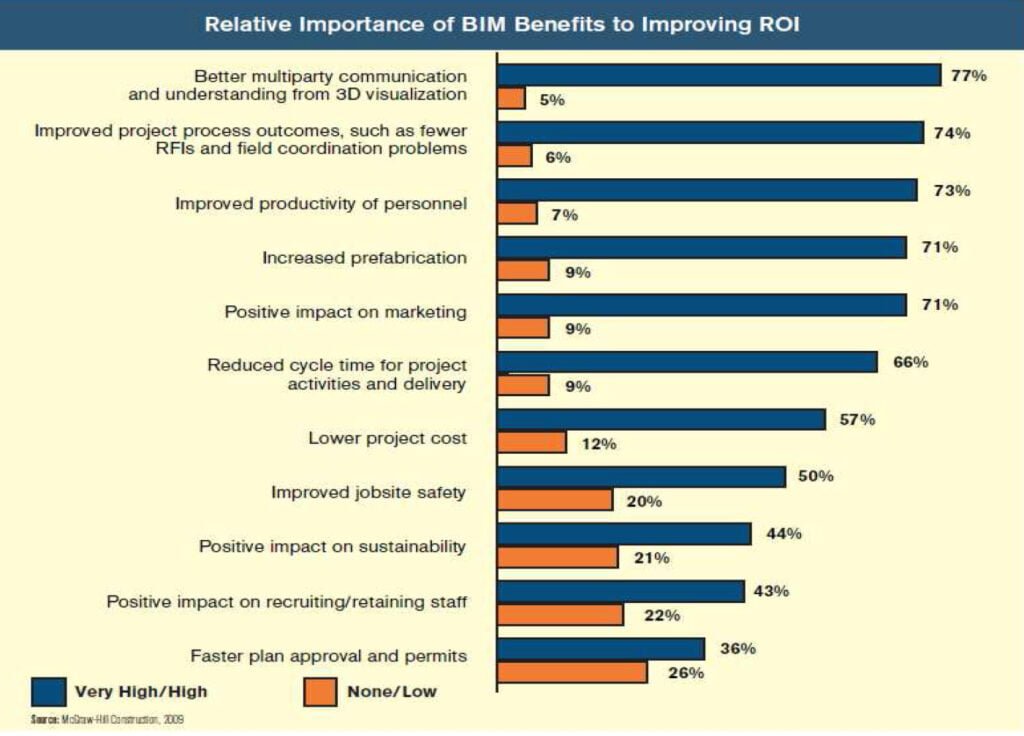BIM has been making headlines for the past few years in the AEC industry. This latest technology is being adopted by several organizations due to its number of advantages. Undoubtedly, it is disrupting the industry, and helping organizations make a positive ROI.
A report by McGraw Hill states that two-third of users implementing BIM have reported a positive ROI on their investments.

Along with a disrupting technology, comes various myths related to it, the same is true with BIM. Therefore, Team BIMEX is here to break these myths and assist you in leveraging this breakthrough technology.
The Top 5 Myths About BIM
1. BIM is only meant for 3D models
BIM is used to produce stunning visual representations using 3D Modeling. But it is only a small part of BIM. It is a process that equips Architects, Engineers, Contractors, Vendors, and Building Owners with a collaborative approach in crafting stunning buildings.
BIM allows the AEC’s to view the digital representation of the physical and functional properties of each component used in the project. This makes it easier for everyone working on the project to understand their part and manage the project effectively.
The data associated with each of the components in BIM allows the project managers to easily make changes in small components to minimize the errors. This data can be intelligently used to derive insights that help in reducing time effectively and increase the efficiency of the process.
2. BIM is for Big Projects only
While surfing the internet, it’s easier to get detailed case studies of big projects. Unknowingly making up people’s minds to believe that BIM is only meant for big projects, but it’s not true.
BIM is useful, irrespective of the scale of the project. BIM helps the organizations in calculating design cost and saving a lot of time on project cost estimations. As a result, it increases the overall efficiency of the project and reducing the overall chances of errors and re-works in the project.
Irrespective of the scale of the organization, everyone needs better efficiency, communication, and cost reduction. Therefore, BIM is useful for all types of projects, not only for big projects.
3. BIM is just Another Software
People perceive BIM as just another software that will be installed in their computers. But it’s a big misconception.
BIM is a process, not a software, that brings all the stakeholders like Architects, Engineers, Owners, and Construction people together to work collaboratively and effectively. The process of BIM allows the stakeholders to create better designs, reduce errors, and reduce project cost, ultimately improving the overall efficiency of the project.
BIM is changing the way the industry works by providing a better process and making the traditional ways of working obsolete. Considering BIM as software is a myth, it is a process of working.
4. BIM is Very Costly
One of the biggest reasons a lot of organizations do not use BIM is because they believe it is costly. It’s important to understand here that whenever we shift from one technology to another, there is a one-time cost involved in it. Still, we make shifts, because it’s important to change with time and follow the latest technology.
Though, the upfront cost is a bit high, but the long-term benefits involved is worth its cost. A survey by Becerik-Gerber and Rice revealed that 55% of people using BIM have experienced cost-cutting in the projects and 41% of them have realized an overall increase in project profitability.
The overall change in the processes helps the organizations to make huge profits along with minimum possibility of errors and other benefits. Therefore, it is never costly to invest in BIM.
5. Implementation of BIM Requires a New Team
BIM is not that complicated so that you would need to hire a new team to operate. The existing team can be trained and educated to get comfortable with it. BIM itself provides several resources to learn about it and helps organizations to streamline the projects.
There are hundreds of case studies of organizations that have trained their existing team to use BIM and reaping huge profits. It’s a myth that you will need a new team if you want to implement BIM in your organization.
It is always difficult to accept the changes in the traditional working process, so a little hesitation towards BIM is natural in the industry. But it is very important to acknowledge the myths and to overcome them. BIM adds numerous benefits to the organization and helps them to overcome the challenges with resources and training.






